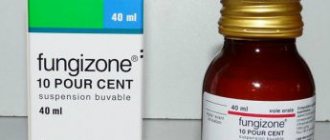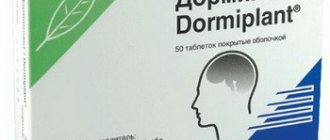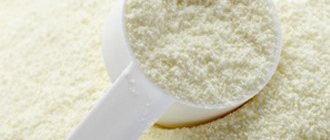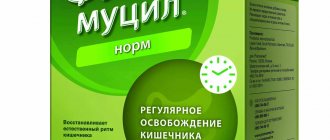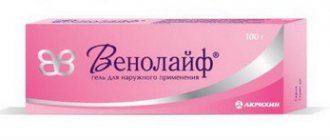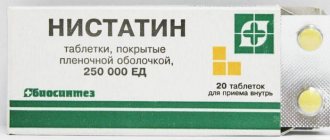Many people who have been struggling with skin rashes on their faces all their lives have heard about the existence of such a magical and cheap ointment as salicylic-zinc paste. It effectively removes spots, pimples and other problems, but, unfortunately, is practically not used today due to the presence of a large number of drugs with similar effects on the pharmaceutical market. In this article we will talk about the benefits of this medicine, and also describe in detail how to use salicylic-zinc paste.
Pharmacodynamics and pharmacokinetics
This external agent is used to disinfect the skin surface. All actions of the paste are determined by the components included in its composition: zinc oxide and salicylic acid .
Salicylic acid is characterized by properties that help relieve inflammation, dissolve and exfoliate dead skin flakes, and exhibit an antiseptic effect.
Zinc oxide – dries out areas of skin damage well.
As a rule, the use of Salicylic-zinc paste is prescribed during the development of skin inflammatory processes accompanied by wetting. The drug can be used both in mono- and combination therapy.
special instructions
Before you start using salicylic-zinc paste, you should carefully read the instructions. The drug is not used by children under 12 years of age. The possibility of prescribing the drug to pregnant women during lactation is strictly limited. Women can use the medication on the recommendation of a doctor. Currently, no cases of drug interactions between the composition and other drugs have been identified, but physicians should be notified about the constant use of any drugs. The paste must not be applied to mucous membranes.
Contraindications for use
It has been established that Lassara paste is contraindicated for:
- pregnancy;
- renal dysfunction;
- decreased blood clotting;
- hemorrhagic diathesis;
- anemia;
- peptic ulcer of the stomach and duodenum.
Also, the product is not recommended for use on wet or excessively dry areas of the skin.
Short description
This is a personalized ointment. It has a combined composition. Dermatology owes the discovery of a drug that has become widespread in the treatment of skin diseases to the German physician Oscar Lassar. Initially, the pharmaceutical substance consisted of only one main component, due to which the therapeutic effect was realized - zinc oxide, which has a drying, adsorbing effect. It has been established that it also has a local anti-inflammatory, antiseptic, antifungal effect, inhibits the penetration of various infectious agents into the body, and neutralizes skin irritants. Additionally, the composition included formative indifferent substances - starch and petroleum jelly (lard could be present as a base instead of petroleum jelly).
Being a specialist in the field of dermatology in terms of practical activities, Lassar discovered that such a mixture of 3 components turned out to be a good nutrient substrate for pathogenic bacteria. This observation served as the basis for the inclusion in the formulation of the admixture of salicylic acid, which is a rather toxic compound with keratolytic, locally irritating and weak antiseptic properties. Also for the same reason, it was proposed to replace starch with a fine powder - talc or mountain flour (synonyms: infusor, diatomaceous earth), which has absorption, abrasive properties and contributes to the death of pests. Lassar's work “Salicylic Pastes” was published back in 1888.
Analogs
Level 4 ATC code matches: Naftalan oil
Suporon
Naftaderm
Vinylin
Hydrogen peroxide
Potassium permangantsovka
Iodoform
Pantocide
Diamond green
Ectericide
Elekasol
Salicylic-Zinc ointment
Formalin
Formagel
Aseptolin
Xeroform
Vitaon
Olazol
Formidron
Octenisept
The main analogue is the drug Galmanin .
pharmachologic effect
Official preparations still produced by the domestic pharmaceutical industry with the trade name “salicylic-zinc paste” belong to the pharmacotherapeutic group of antiseptics and disinfectants. Their main purpose is to delay the growth and development of microorganisms on the surface of the body, disinfection.
According to the international classification system based on chemical structure and main indications, the drug is included in the group of drugs prescribed for the local treatment of skin diseases and is indicated as a drug with a protective and softening effect. In the ATC classification system, it is designated by the alphanumeric code D02AF, which is due to the presence of salicylic acid in the composition. Its clinical and pharmacological characteristics are also given: an antimicrobial agent for local therapy containing drying components.
Lassara paste is a combination of 2 chemical compounds that have pharmacological activity. Thanks to this, it has a complex therapeutic effect on the body, i.e. acts simultaneously on several parts of the pathological process.
The instructions report the following effects:
- drying – promotes the outflow of fluid, drying the wound area, absorbing moisture, getting rid of the unpleasant odor that appears due to excessive sweating, and prevents rotting. Capable of drying the surface of damaged (injured) skin, a fresh pimple, the edges of a newly formed wound, herpetic elements, purulent cracks on the arms, legs, ulcers. Has a pronounced effect. It is important that heavy fat-based ointments impede the normal separation of fluid and provoke the occurrence of suppuration;
- antimicrobial - blocks the proliferation of harmful microorganisms, inhibits their spread to adjacent tissues, and prevents the re-introduction of infection or the appearance of new elements. Shows antifungal properties - the ointment is effective against some types of pathogenic fungi;
- pronounced anti-inflammatory – helps relieve inflammation, remove redness, irritation, reduces pain;
- keratolytic - softens rough skin, leads to exfoliation of dead cells, promotes renewal of surface layers. This property helps to successfully fight dry calluses and blisters.
Reviews of Salicylic-zinc paste
In most cases, reviews of Lassara paste are found in discussions related to the treatment of acne. Typically, users report that this product helps them quickly get rid of acne and other irritations on their facial skin. At the same time, some of them are surprised that such a simple drug turns out to be so highly effective. As a rule, Lassara ointment is applied pointwise to acne on well-cleansed skin at night. In the morning, many note the elimination of redness, irritation and the number of acne.
There are often reports when treatment with this remedy is carried out with the simultaneous use of tar soap. This allows you to dry out inflammation well, get rid of acne faster and improve skin condition.
However, not all users liked using Salicylic-zinc paste. Some people are not satisfied with the excessively oily base of the drug, which, according to patients, makes the skin even oilier. Others note that if the drug gets on unaffected skin, it begins to peel off severely.
As for the experts, they remind us once again that this product is not a cosmetic cream. Although it is highly effective and helps get rid of acne, it should only be used as prescribed by a specialist. Moreover, in case of severe acne, you should first find out the cause of its occurrence, and only then carry out treatment.
Can I use it during pregnancy?
In the instructions for salicylic-zinc paste, pregnancy is not listed among the contraindications to the use of such a medicine. However, to date, the safety of using Lassara paste by expectant mothers has not been confirmed by clinical trials. This does not mean that the drug can harm the woman or her baby. But it must be used after the doctor’s approval and only in doses.
It is worth considering that during pregnancy the sensitivity of the body increases. Therefore, even a safe salicylic-zinc paste can cause unexpected allergies.
Price of Salicylic-zinc paste, where to buy
The price of Lassara paste in Russian pharmacies varies between 20-45 rubles.
- Online pharmacies in RussiaRussia
- Online pharmacies in UkraineUkraine
Pharmacy Dialogue
- Salicylic-zinc paste (25g jar) Tula FF
19 rub. order - Salicylic-zinc paste (25g jar) Samaramedprom
17 RUR order
- Salicylic-zinc paste (25g jar) Tverskaya FF
29 RUR order
show more
Pharmacy24
- Salicylic-zinc paste 20 g tube PrAT FF "Viola", Ukraine
10 UAH. order - Salicylic-zinc paste 25g Ternofarm TOV, Ternopil, Ukraine
8 UAH order
Instructions for use
Using salicylic-zinc paste is very simple:
- The medicine should be applied only to dry, previously cleansed skin.
- The ointment is applied in a thin layer exclusively to problem areas.
- You can repeat this procedure 2 to 3 times a day.
The duration of therapy with salicylic-zinc paste is selected on an individual basis. On average, this period varies from 6 to 20 days.
How to use for rashes?
When treating acne, you should use the paste after taking a shower or thoroughly cleansing your face. It is recommended to apply the product to the skin only once a day. And if we are talking about treating acne on the face, then it is better to do this procedure not every day, but at intervals of a day, otherwise the skin may dry out. But if the epidermis is excessively oily, it is quite possible to use the paste daily.
For acne treatment to be truly effective, you should avoid the use of cosmetics and adhere to a diet for the entire period of therapy.
Side effects, overdose
Side effects of salicylic-zinc paste:
- painful sensations in the area of its application;
- burning sensation;
- itching
Typically, allergic symptoms are immediately eliminated after removing the paste from the skin, washing your hands and treating the skin with a rich cream. However, in some cases, symptoms do not go away for a long time. Then a consultation with a dermatologist or allergist is necessary.
Rarely, body temperature rises, which is a more serious side effect.
Then symptomatic therapy is required. Salicylic-zinc paste will not cause serious health problems in an adult, but in any case, if side effects occur, you should consult a doctor.
As for overdose, it occurs either with the simultaneous use of drugs identical in pharmacodynamics or composition, or when an excessive amount of paste is applied to a certain skin area.
An overdose of salicylic-zinc paste is expressed in the following symptoms:
- profuse sweating;
- noise in ears;
- decreased hearing acuity;
- dizziness.
In more complex situations, the patient risks:
- experience seizures;
- get sick with hemorrhagic diathesis;
- feel deteriorated functioning of the respiratory system;
- be affected by kidney and liver dysfunction.
If such symptoms occur, be sure to contact a medical facility. Symptomatic therapy is carried out after removing the remaining ointment from the skin.
It is worth noting that some undesirable symptoms occur when the drug is not stored correctly or the expiration date is not met. It is recommended to store the paste only at room temperature; failure to comply with this condition leads to loss of medicinal properties.
The storage location should be dry, warm and not exposed to direct sunlight. Be sure to store it out of the reach of children. The product is suitable for use within 4 years from the date of release. If a change in color, odor or consistency is detected, the paste cannot be used, since these signs indicate improper storage, and its action may cause negative reactions.
Possibility of overdose
Manufacturers do not provide information about overdose in the instructions. Some report that it has not been identified. This is due to the low concentration of active substances in the skin layers and insufficient penetration into the blood.
However, it should be remembered that prolonged use or treatment of a large area (more than 60%) can lead to unpleasant consequences, such as:
- dizziness;
- ulceration of the epithelial cover;
- hypopigmentation;
- skin atrophy;
- excessive sweating;
- hemorrhagic syndrome;
- decreased ability to distinguish sounds;
- impaired breathing, liver, kidney function;
- convulsions.
Carrying out an allergy test
This is a way to check whether the composition of the jar is suitable for a particular person. Helps assess the risk of an allergic reaction. To do this, a small amount is applied to areas with the most delicate, receptive skin: the bend of the elbow, popliteal cavities, neck, inner shoulder. Sensitivity testing means determining the reaction of the skin and immune system to a drug composition. If it reacts inadequately (burns, tingles, itching, redness), then you need to urgently remove the remaining mixture from the skin. In the future, it is recommended to replace the paste with a more suitable safe drug.

